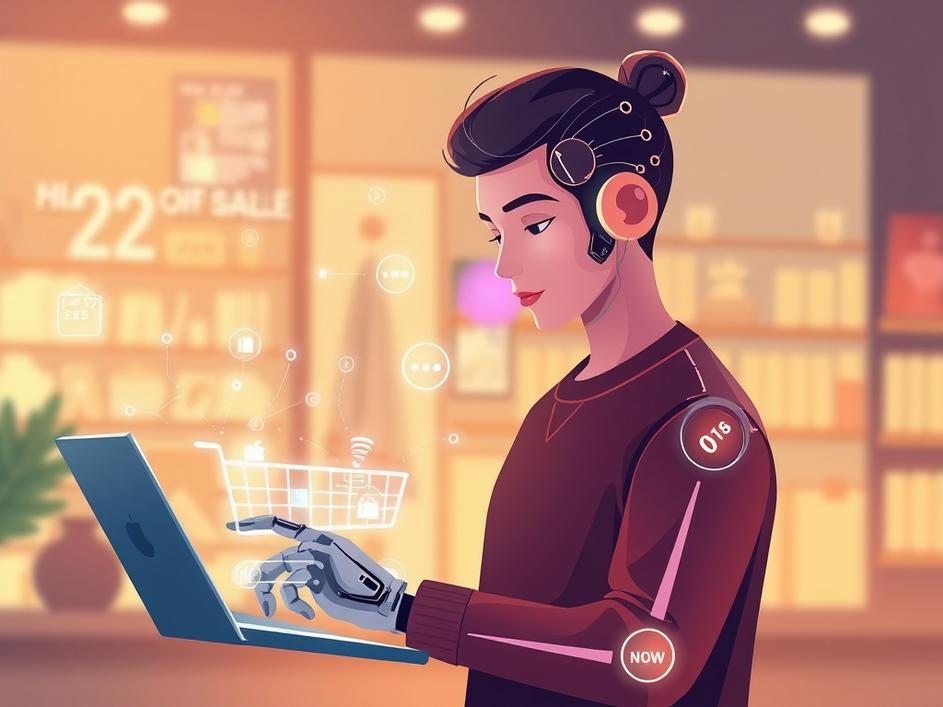


We are a digital agency helping businesses develop immersive, engaging, and user-focused web, app, and software solutions.
2310 Mira Vista Ave
Montrose, CA 91020
2500+ reviews based on client feedback

What's Included?
ToggleWalk into almost any school or college today, and you’ll hear talk about AI. Students are using it for everything from brainstorming essay ideas to crunching numbers for science projects. Teachers are grappling with how to handle it, and parents are wondering what it all means for their kids’ education. This new tech just popped up, and suddenly, it’s everywhere. But what if this isn’t just spontaneous? What if the tech companies making these AI tools have a very specific plan, and students are a big part of it? It’s starting to look like these powerful AI tools aren’t just there to help with homework; they’re also building a future customer base, right in our classrooms.
Think about how big tech companies usually get people hooked. They offer something amazing for free or very cheap, especially to young people. Social media platforms did it. Google did it with search and email. Now, AI companies are doing the same. They know that if students start using their AI agents now, they’ll likely stick with them later. It’s like giving away free samples. You try it, you like it, and then you’re a customer for life. These companies aren’t just being generous; they’re making a strategic investment. They’re trying to get kids used to their specific AI assistant and its way of interacting. This isn’t just about finishing homework; it’s about shaping how a whole generation learns, works, and thinks, all within their own digital systems.
This shift brings up big questions for schools and families. When does using AI cross the line from a helpful tool to outright cheating? Is it okay to use an AI to write a whole essay, or just to brainstorm ideas? What about checking math problems? Schools are scrambling for rules, but it’s hard because the tech changes so fast. The problem isn’t just about students getting bad grades or not learning. It’s about what ‘learning’ even means anymore. If a student relies entirely on AI, are they truly understanding the material? Are they developing critical thinking skills? Or are they just becoming good at prompting a machine? It’s a messy area with no easy answers, making it harder for teachers to keep things fair and productive.
For sure, AI tools can be super helpful. They can assist students with disabilities, offer personalized tutoring, or just make research quicker. For some, it levels the playing field, giving access to help they might not otherwise get. But there’s a downside. When students lean too heavily on AI, they might miss out on building essential skills like independent problem-solving, deep research, or clear writing. It’s like using a calculator for every single math problem – you get the answer, but do you truly understand the steps? Companies win big either way. If students use AI to genuinely learn, they’re using the product. If they use it to cheat, they’re still using the product, reinforcing their dependency and making these tools seem vital. It’s a win-win for companies, but the consequences for students’ long-term development are still unclear.
So, what’s a parent or teacher to do? Banning AI entirely seems impossible and maybe even counterproductive, given its role in the changing world. Instead, the focus has to shift. We need to teach students *how* to use AI responsibly and ethically. That means open conversations at home and in school about what’s acceptable. It means educators rethinking assignments so they can’t be easily done by AI, or designing tasks that specifically require thoughtful AI use. Schools also need clearer, quicker policies. This isn’t just about catching cheaters; it’s about preparing students for a future where AI will be part of their work lives. We have to guide them to be masters of the tools, not just users.
My take is straightforward: AI companies are doing what any smart business does. They see an opportunity to get users early and cement their place in a new market. It’s not necessarily malicious, but it’s a calculated move. They won’t put up roadblocks just because students might use their tech to cut corners. Their job is to grow their user base, and schools are a prime target. The real responsibility falls on us – educators, parents, and even students – to understand this dynamic. We need to recognize that these tools are powerful, and with power comes a need for careful guidance and clear boundaries. Ignoring it won’t make it go away. We have to engage with it smartly, understanding the underlying business goals while protecting education’s integrity.
The rise of AI in education is more than a trend; it’s a fundamental shift. While AI tools offer incredible possibilities for learning, we can’t ignore the business interests driving their rapid adoption, especially among young people. It’s a tricky balance: embracing innovation while upholding academic honesty and nurturing essential skills. As these AI tools become even more common, open dialogue, smart policies, and a focus on critical thinking will be key. We need to make sure that the future of learning genuinely empowers students, rather than just turning them into lifelong consumers of tech. The choices we make now will shape how a whole generation learns and interacts with the world.



Leave a reply